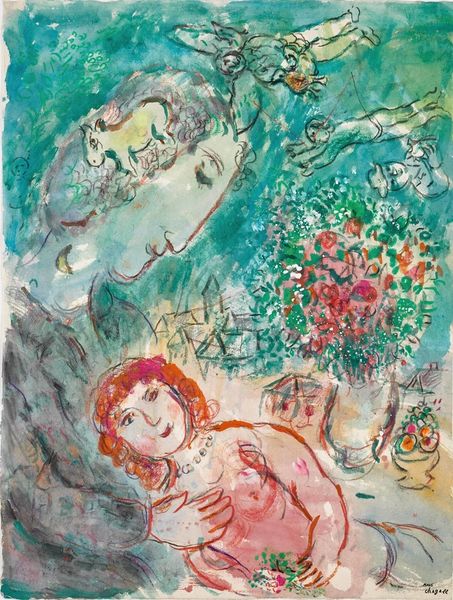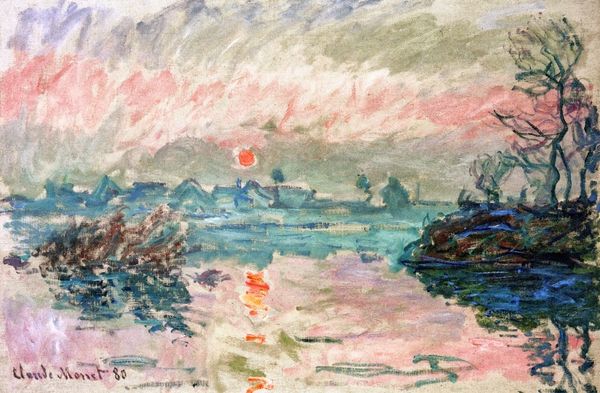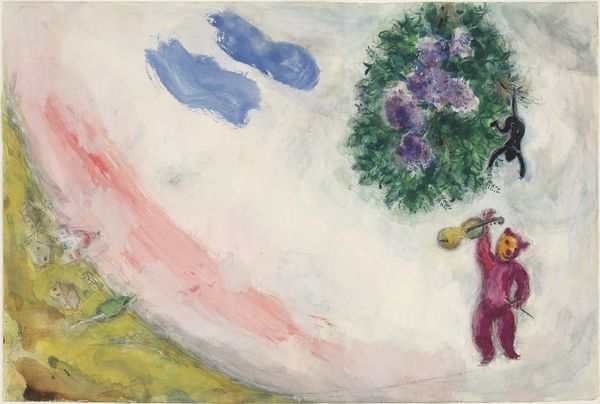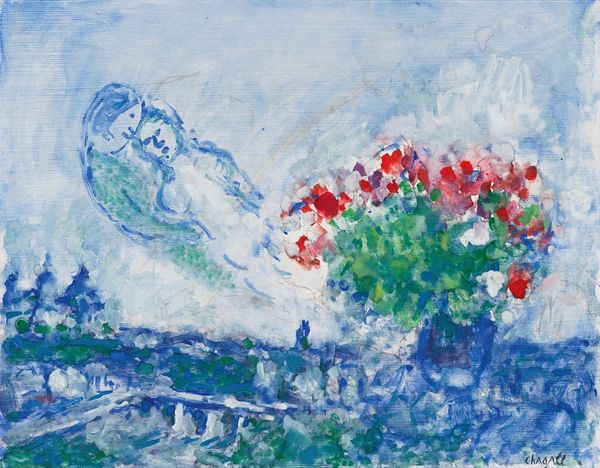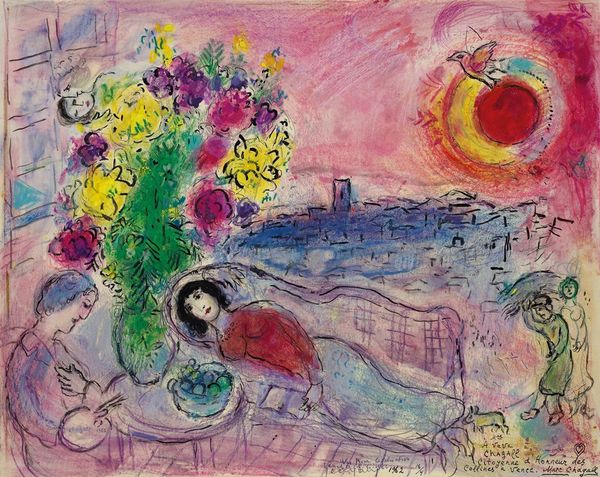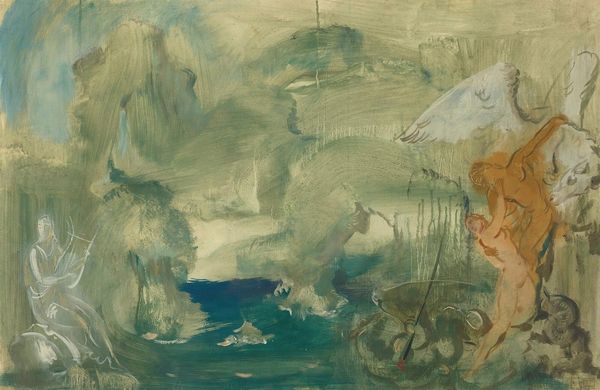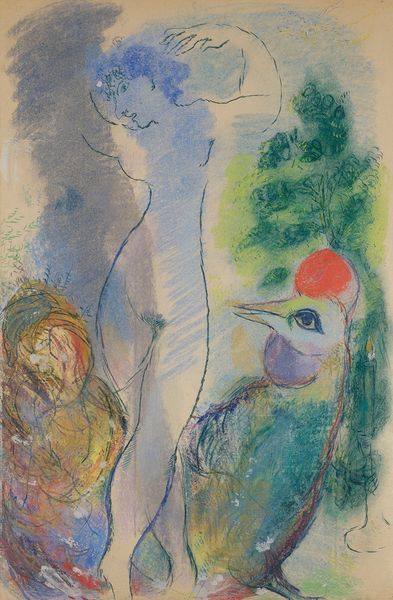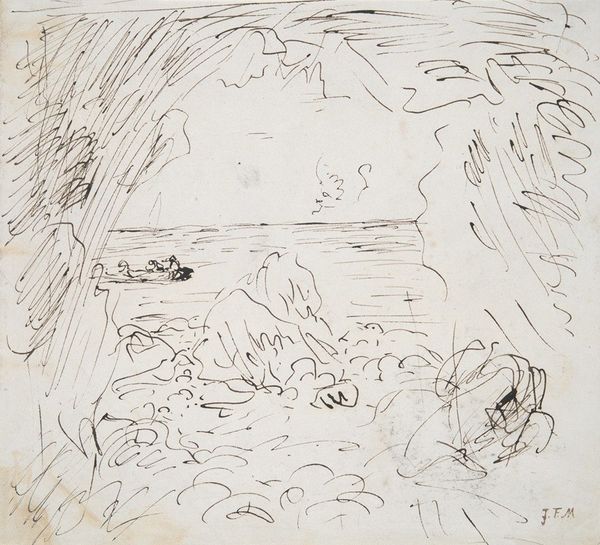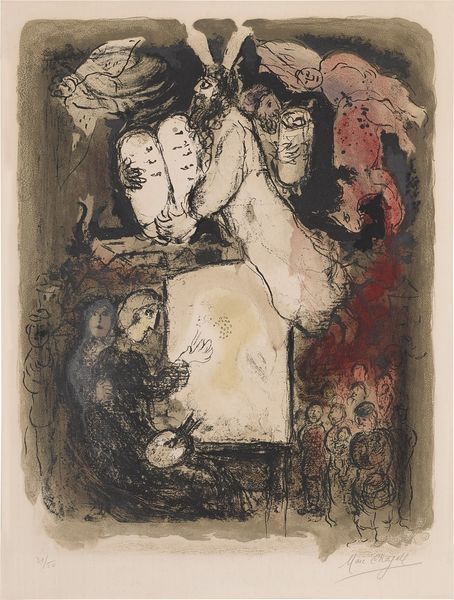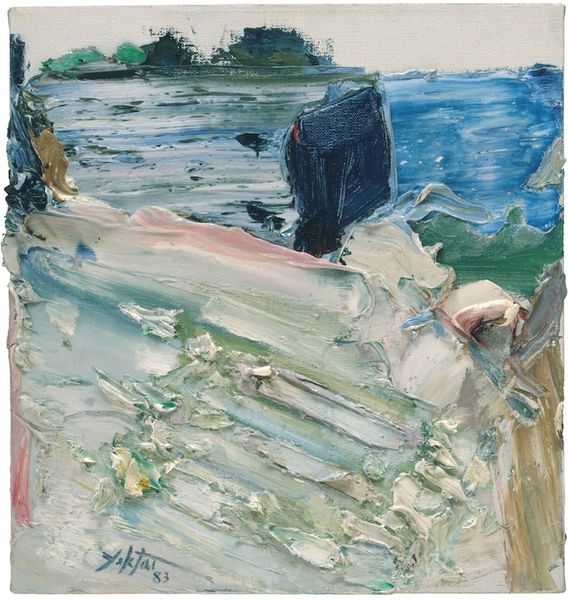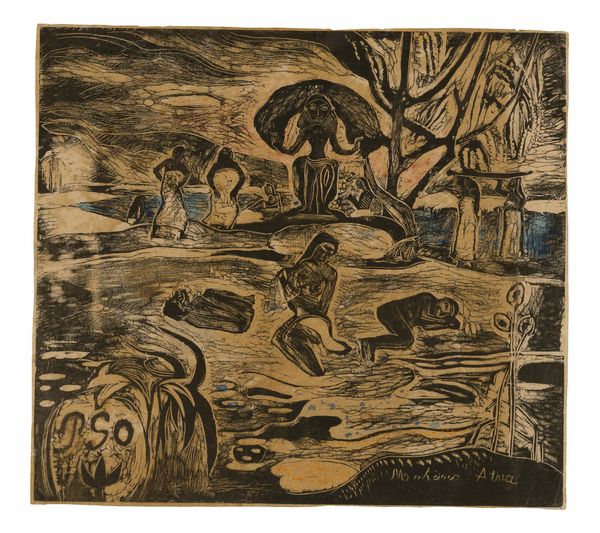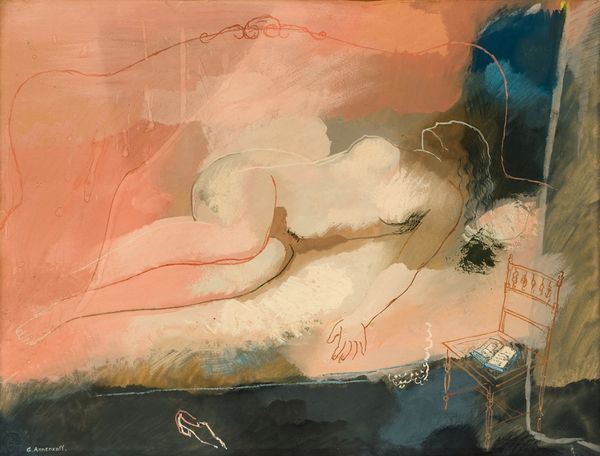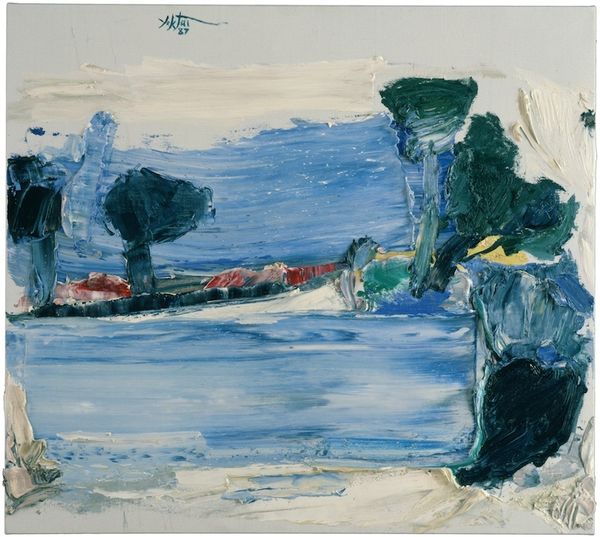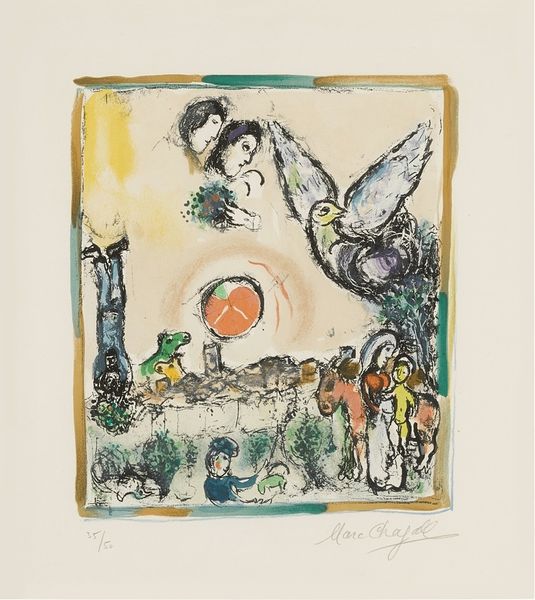
Copyright: Modern Artists: Artvee
Curator: Before us, we have Chagall’s “Vue sur Notre Dame,” created as a lithograph painting in 1980. Editor: Well, it certainly creates a rather dreamy, almost hallucinatory impression with its unconventional color palette and floating figures. There's a dreamlike quality, isn't there? Curator: Indeed. Note the blush-toned sky and river. It establishes a specific mood that overrides a true landscape depiction. Chagall often disrupted typical form, choosing to reassemble images in ways that favored feeling over observed reality. It's Expressionistic in its departure from purely mimetic representation. Editor: I'm intrigued by how Chagall combines high art with everyday labor and making. The lithographic process itself, reliant on industrial-scale reproduction, counters the expected preciousness of a painting. How does he think about materials? The texture implies layers upon layers of working and reworking of the plate itself. What mark making did Chagall employ and how might those techniques point to his relationship to commercial lithography? Curator: That's a very interesting point. Also notice how the figures overlap architectural details. See, for instance, how the reclining nude interacts with the foreground and Notre Dame emerges as the backdrop. What could it mean, conceptually? Perhaps to unite or conflate the sensual with the spiritual realms, to imbue the sacred with earthly desires, or conversely, the mundane with transcendence. Editor: Thinking of the commercial considerations, how did the publisher decide on the colors? The pink seems key. And in what print shop were these made? To see the original printing plates, rollers, and lithographic stones alongside the final print offers another way of reading Chagall. Curator: We could investigate its historical context further to inform those ideas. Nevertheless, the color palette works wonderfully. By manipulating color theory in a way that favored emotive intensity over naturalistic representation, Chagall achieves an image that seems to vibrate. Editor: His subversion of traditional techniques to create emotion is undeniable, but considering the means of production helps unravel so much of his process. Curator: Yes. In this painting, by allowing its subjects to permeate one another on the level of pure composition and form, meaning emerges beyond a purely material or commercial analysis. Editor: And Chagall lets us look, finally, with the heart as well as the mind to truly understand and admire this unusual marriage.
Comments
No comments
Be the first to comment and join the conversation on the ultimate creative platform.
